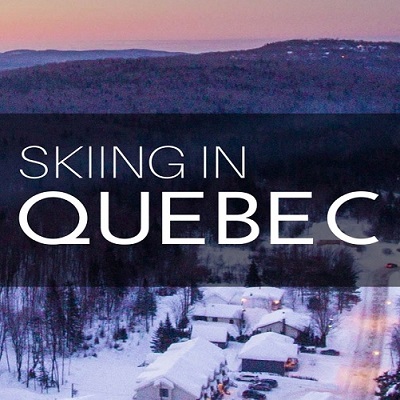Destimetrics - Warning Flags Are Going Up As Booking Pace Is Going Down At Western Mountain Destinations

A sustained slackening in booking pace since early in the year has led to an appreciable cooling in summer occupancy in mountain resort towns according to the most recently released data from DestiMetrics,* the Business Intelligence division of Inntopia. As post-pandemic demand eases and inflation continues to loom large, lodging properties at 17 mountain destinations across seven western states are recording some notable declines for the first time in nearly two years. An aggregated assessment for the upcoming summer months from data compiled through May 31 illustrates that while daily rates remain up over last year and at historically high levels, occupancy has dropped notably from both last summer and the pre-pandemic summer of 2019.
Summer forecast—compared to one, two, and three years ago
On-the-books occupancy for the six months from May through October is down 5.6 percent compared to last year at this time and is currently down in four of the six months—most notably a 9.3 percent drop for July and 16.6 percent for August. The Average Daily Rate (ADR) is up a moderate 5.9 percent with increases in all six months but with the lower occupancy, revenues are down 0.1 percent compared to last year.
In striking contrast, when compared to two years ago at this time when pandemic restrictions and uncertainty were gripping the travel industry, summer occupancy is up 152.6 percent compared to the summer of 2020 with ADR up 34.6 percent to deliver a whopping 240.1 percent increase in revenues compared to that difficult summer.
The declines summer occupancy compared to both 2021 and 2019 are the cumulative results of softer reservations activity that first emerged late last year. Booking pace as of May 31 for arrivals in May through October are down 40.4 percent compared to last year at this same time and, more significantly, are down 20.6 percent compared to 2019. These declines have been recorded since last January but have deepened considerably in recent months—including a 50.1 percent year-over-year decline in April.
“We have been talking about the slower booking pace for months and the decline in occupancy was anticipated as pent-up demand continues to wane—especially compared to last year’s recovery boom. But those declines compared to a more stable 2019 indicate that the economic fundamentals have shifted enough to impact the bottom line,” explained Tom Foley, senior vice president of Business Intelligence for Inntopia. “And though we’re still seeing room rates at all-time highs, the slackening demand is now long-term and increasing economic pressures are forcing consumers to retreat from high room rates. The result is that considerably fewer room nights have been booked for this summer compared to both last year and 2019, and it is unlikely that those higher rates alleviate the revenue decrease caused by lower occupancy.”
Foley pointed out that there are two key factors right now—pent-up demand is waning after 18 months of unbridled travel enthusiasm and economic pressures such as high inflation, the rising cost of credit, and declining savings are eroding discretionary dollars which is putting pressure on consumers to be more cautious about extra cash and whether it can be used for travel.
Economic indicators
After a very turbulent month, the Dow Jones Industrial Average (DJIA) recovered to post a slight 0.4 percent gain over April. Although this is the second month-over month increase in 2022, the Dow slipped into a negative year-over-year comparison in late April and has remained there throughout May. At times the Index was down by as much as 8.6 percent in year-over-year comparisons to the same day (May 21) in 2021.
“The sustained declines in financial markets have dramatically impacted consumers’ savings and people who were doing well during the pandemic have lost up to 18 percent of their savings portfolios since Jan.1 and that is definitely contributing to declines in the booking pace and some downward pressure on rates,” Foley continued.
And after a slight uptick during April, the Consumer Confidence Index (CCI) dipped a slight 0.9 points in May for the third time in the past six months. Confidence is currently 11.3 percent lower than it was in May 2021 and while it remains stable, the mixed news of strong job growth but high inflation has consumers feeling uncertain. That tepid level of confidence usually leads to declines in consumer spending—particularly on discretionary items.
Once again, the national Unemployment Rate remains unchanged at 3.6 percent in May. Employers added 390,000 new jobs during May—fewer than in April but economists point to slowing job growth as a way to help slow down inflation. Once again, Leisure and Hospitality gained the most jobs with 84,000 new positions but the sector remains down 7.9 percent from before the pandemic. Wages eked up 0.3 percent for the month for annual earnings growth of 5.2 percent.
The National Inflation Rate measures the difference between consumer prices compared to the same time last year. That rate increased from 8.3 percent in April to 8.6 percent in May and marks the eighth increase in the inflation rate in the past nine months.
“Room nights booked for this summer are down a sharp 7.5 percent with declines in all six months,” Foley pointed out. “Economic conditions are changing fast and consumers have been showing signs of retreat since last September and that has accelerated into negative territory since January. And even though the industry is up on revenue compared to 2019, that ‘win’ is due to a likely unsustainable room rate when recognizing the new economic realities and easing of demand.”
Foley then went on to explain that “the industry may have reached a new inflection point where mountain destinations will need to reset their expectations about who is willing and able to travel in the months ahead and how much they can afford to pay compared to the unbridled spending of the past 18 months,” he concluded.













